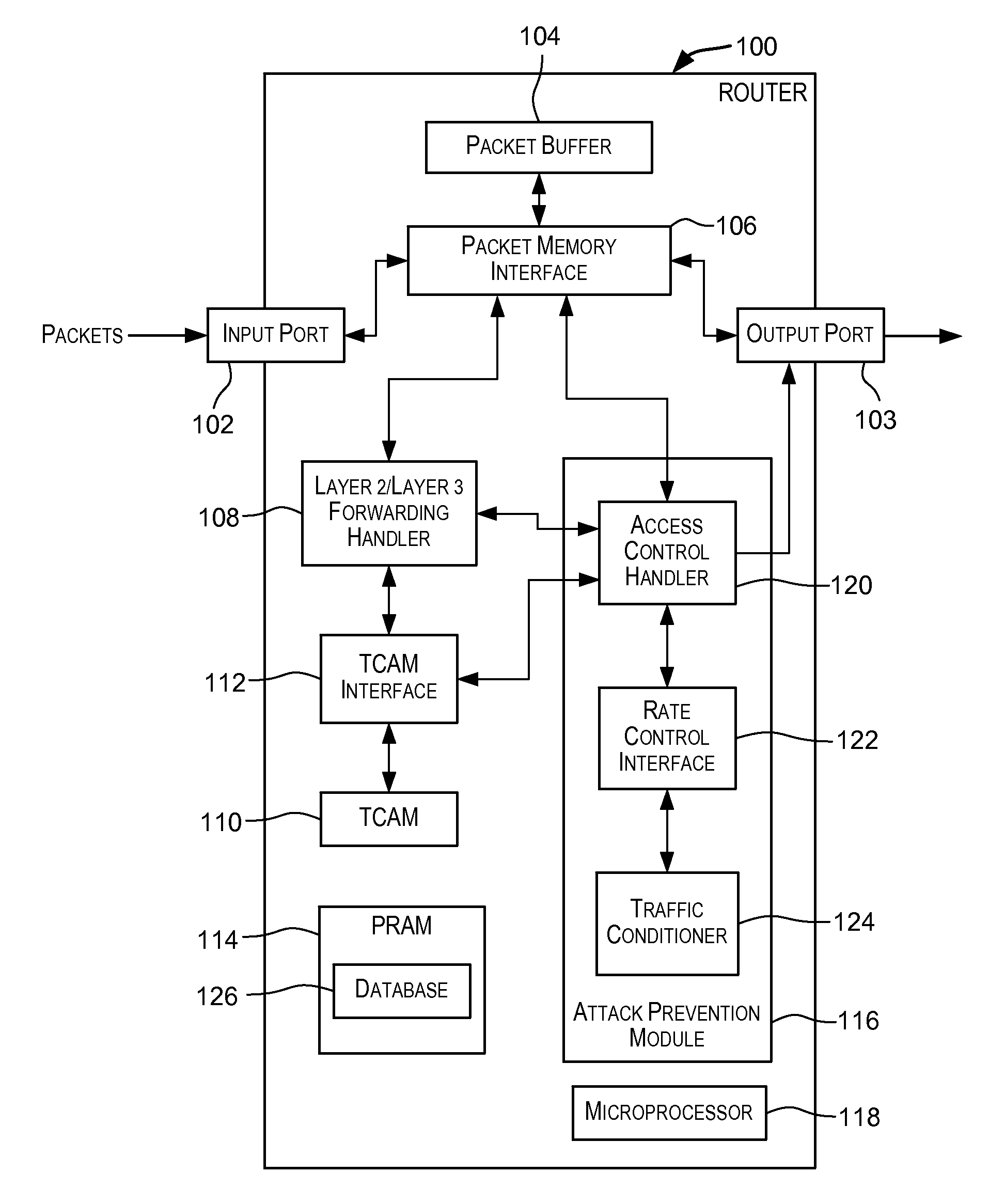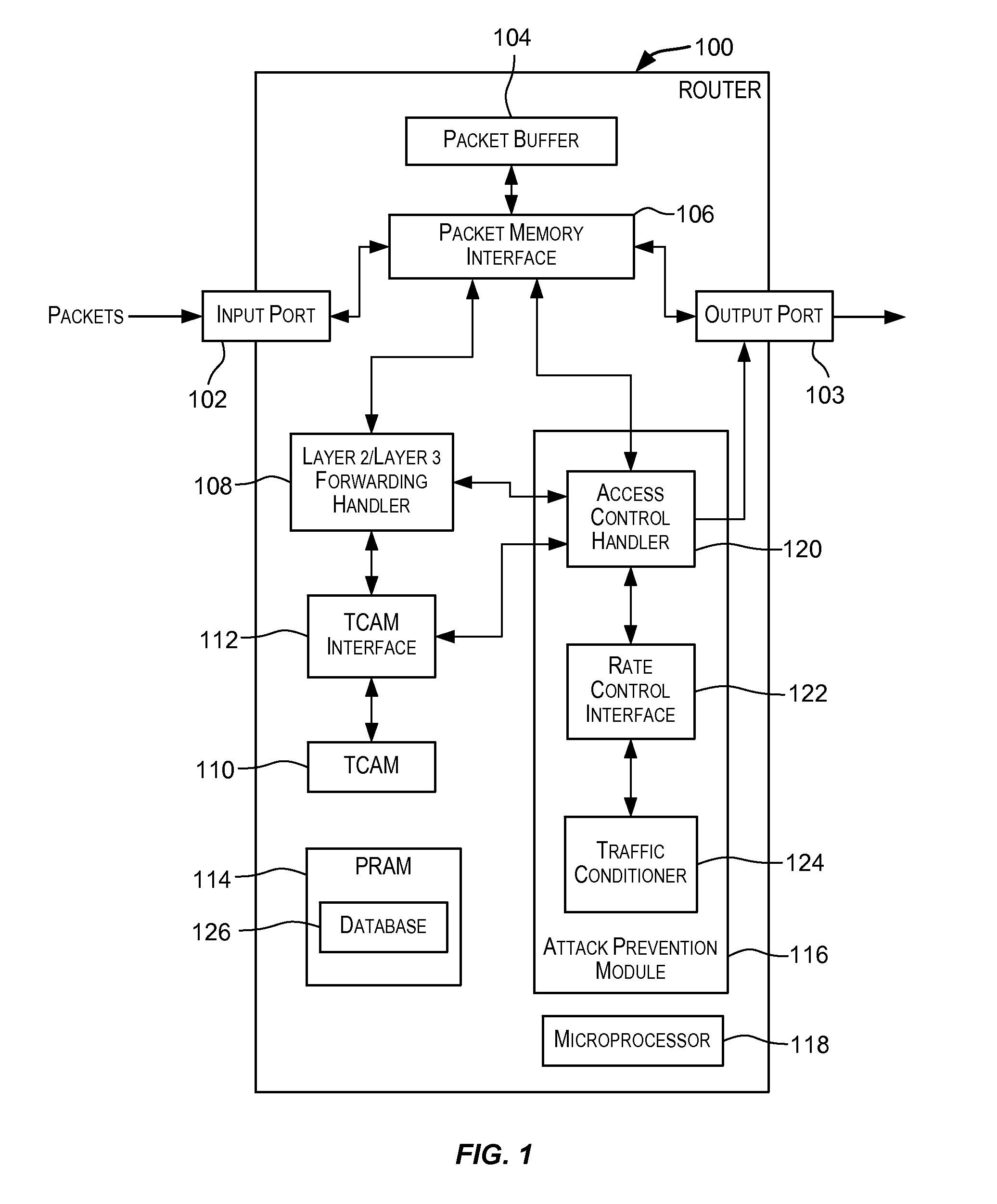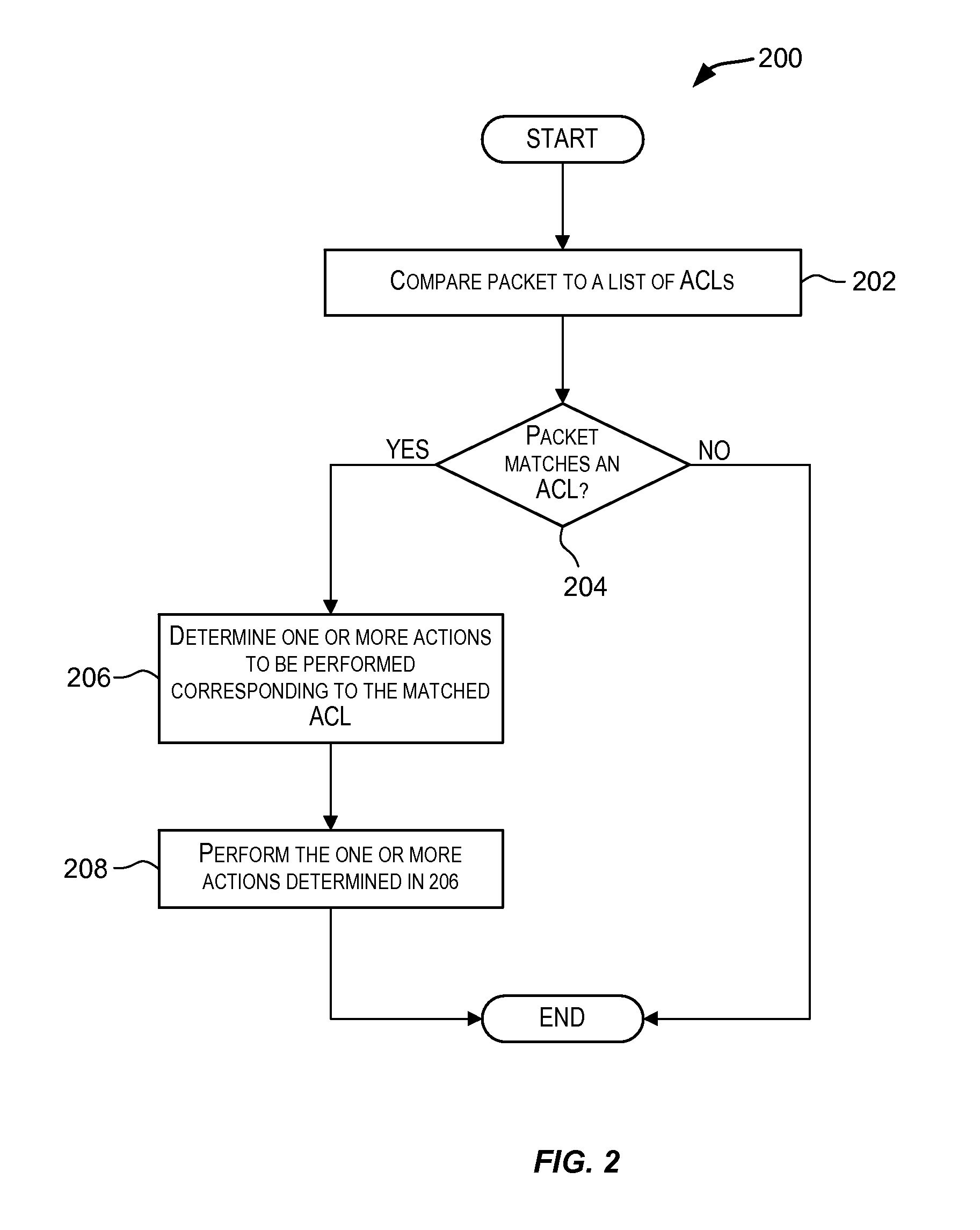Attack prevention techniques
a technology of attack prevention and techniques, applied in the field of networkwork, can solve the problems of not being able to detect and respond to anomalies introduced by attacks such as denial-of-service attacks, and not being able to use the same approach for all types of attacks,
- Summary
- Abstract
- Description
- Claims
- Application Information
AI Technical Summary
Benefits of technology
Problems solved by technology
Method used
Image
Examples
example # 1
EXAMPLE #1
Detecting and Preventing a Smurf Attack
[0059]A device (such as a device provided by Foundry Networks, Inc. of Santa Clara, Calif.) may be configured to drop ICMP echo-reply packets when excessive numbers of the packets are encountered, as is the case when the device is the victim of a Smurf attack. An ACL may be configured that may be used to detect ICMP echo-reply packets. The burst rate thresholds may be configured for the device such that the packets are dropped when the thresholds are violated. The number of incoming packets that match the ACL are counted and compared to the burst rate thresholds. If the total volume (in terms of bits-per-second) of the packets that match the ACL exceeds the normal burst rate, then the excess packets are dropped, thereby rate-limiting the matching packets. If the number of packets that match the ACL exceeds the maximum burst rate, then all packets that match the ACL are dropped for the number of seconds specified by the lockup period p...
example # 2
EXAMPLE #2
Detecting and Preventing TCP SYN Attacks
[0061]TCP SYN attacks exploit the process of how TCP connections are established in order to disrupt normal traffic flow. When a TCP connection starts, the connecting host first sends a TCP SYN packet to the destination host. The destination host responds with a SYN ACK packet, and the connecting host sends back an ACK packet. This process, known as a “TCP three-way handshake”, establishes the TCP connection.
[0062]While waiting for the connecting host to send an ACK packet, the destination host keeps track of the as-yet incomplete TCP connection in a connection queue. When the ACK packet is received, information from the connection is removed from the connection queue. Usually there is not much time between the destination host sending a SYN ACK packet and the source host sending an ACK packet, so the connection queue clears quickly.
[0063]In a TCP SYN attack, an attacker floods a host with TCP SYN packets that have random source IP a...
PUM
 Login to View More
Login to View More Abstract
Description
Claims
Application Information
 Login to View More
Login to View More - R&D
- Intellectual Property
- Life Sciences
- Materials
- Tech Scout
- Unparalleled Data Quality
- Higher Quality Content
- 60% Fewer Hallucinations
Browse by: Latest US Patents, China's latest patents, Technical Efficacy Thesaurus, Application Domain, Technology Topic, Popular Technical Reports.
© 2025 PatSnap. All rights reserved.Legal|Privacy policy|Modern Slavery Act Transparency Statement|Sitemap|About US| Contact US: help@patsnap.com



